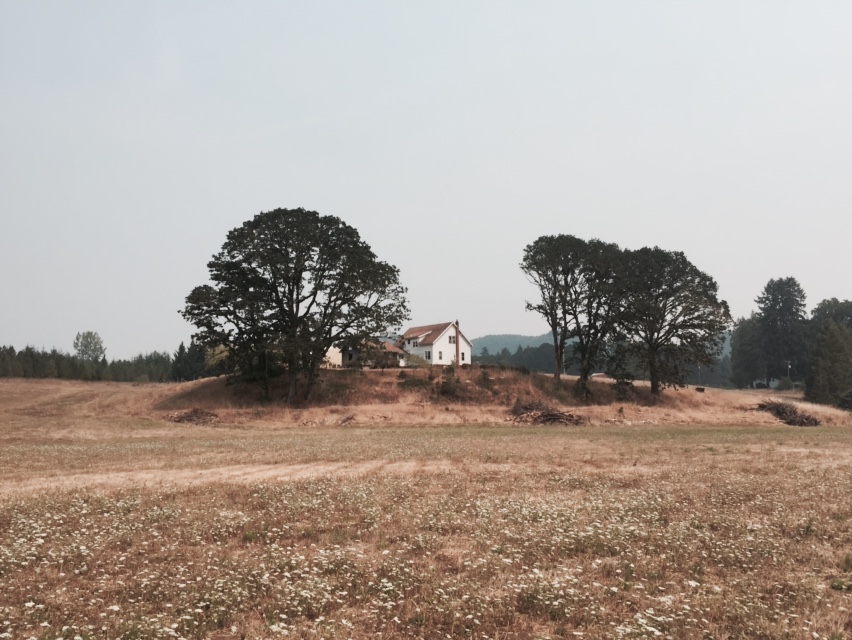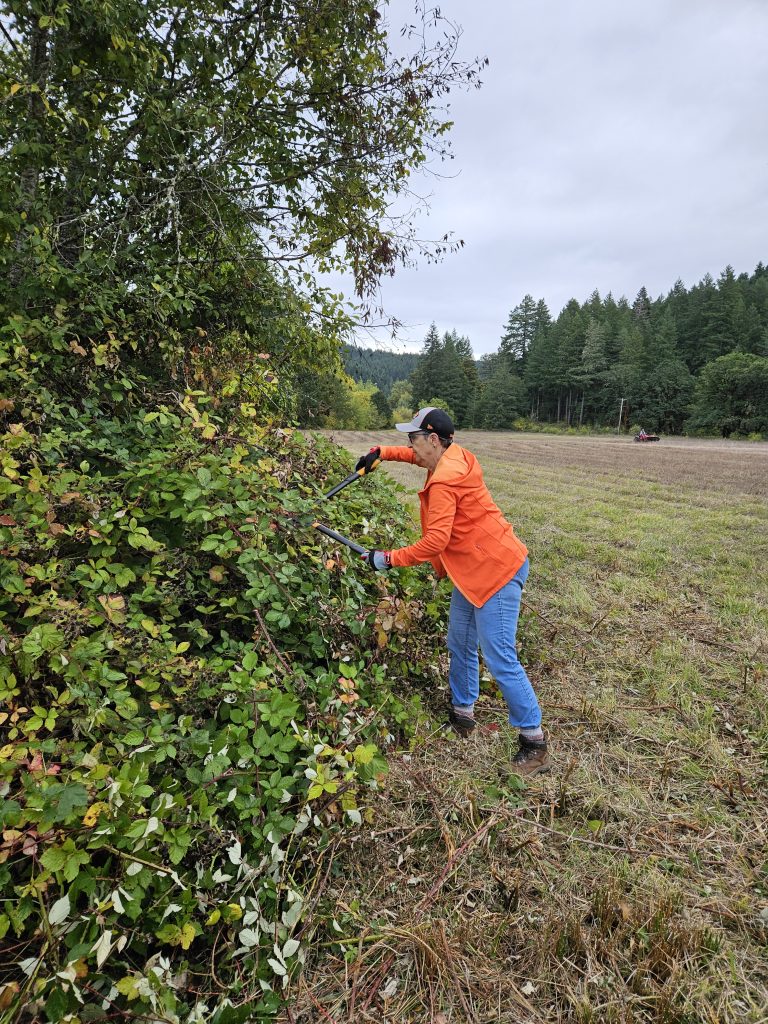
While Sid finishes mowing the far field, Diana continues the war against blackberries.
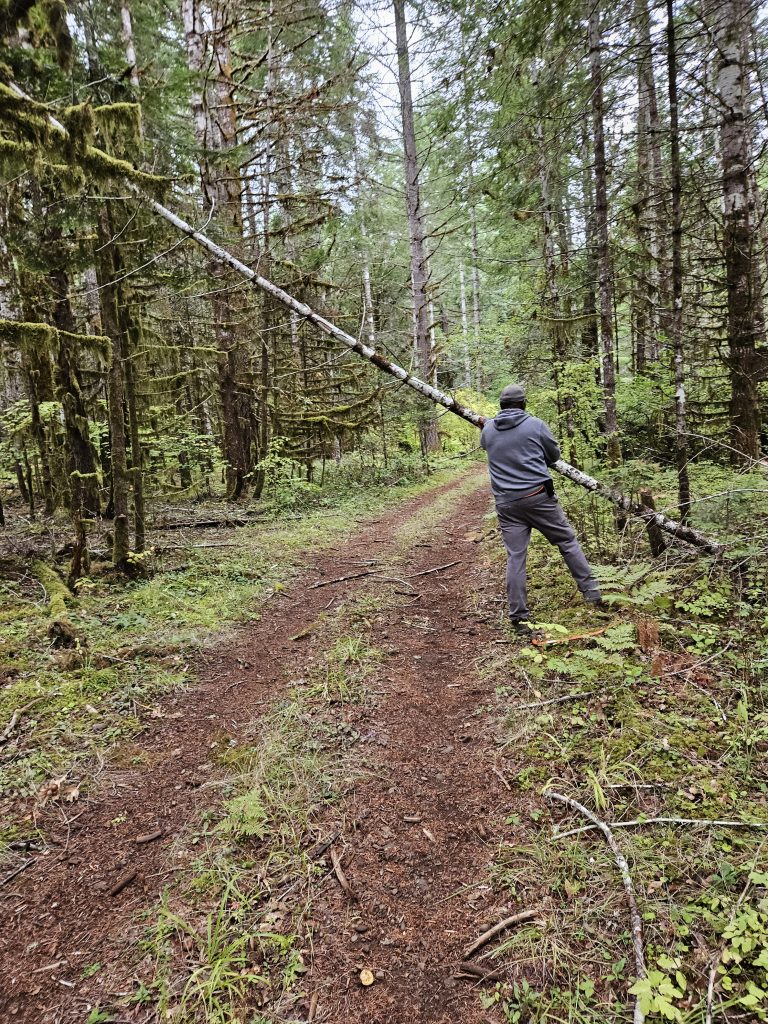
This leaning tree poses a risk.
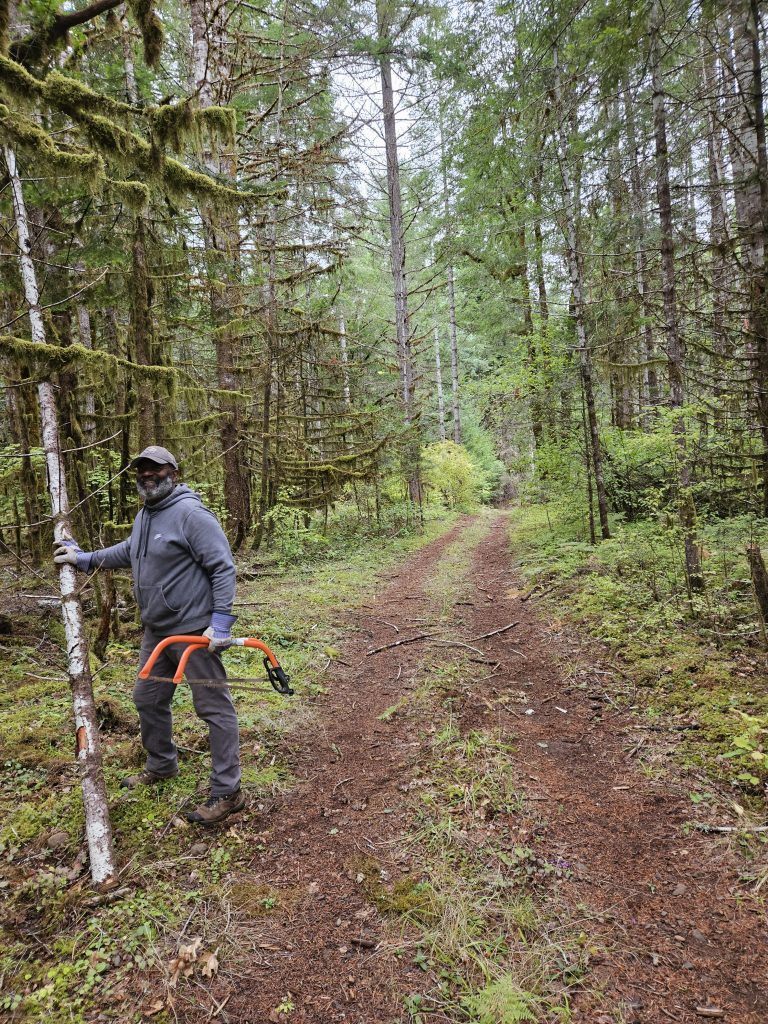
Not anymore!
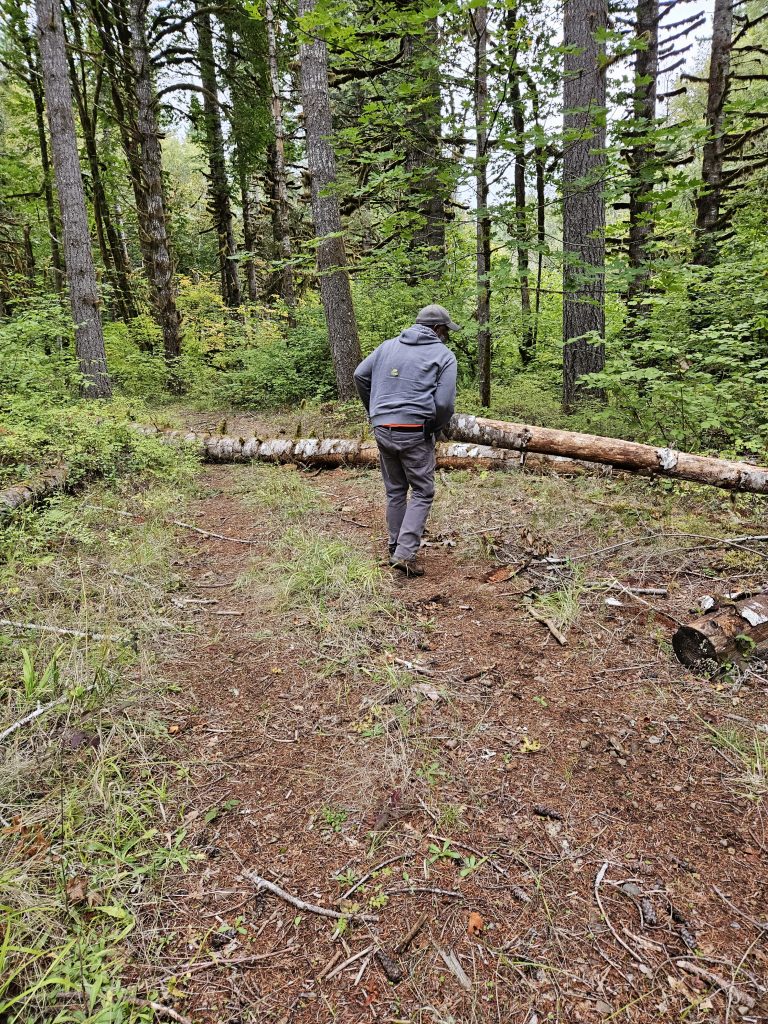
Oh oh! This duo is a bigger project.
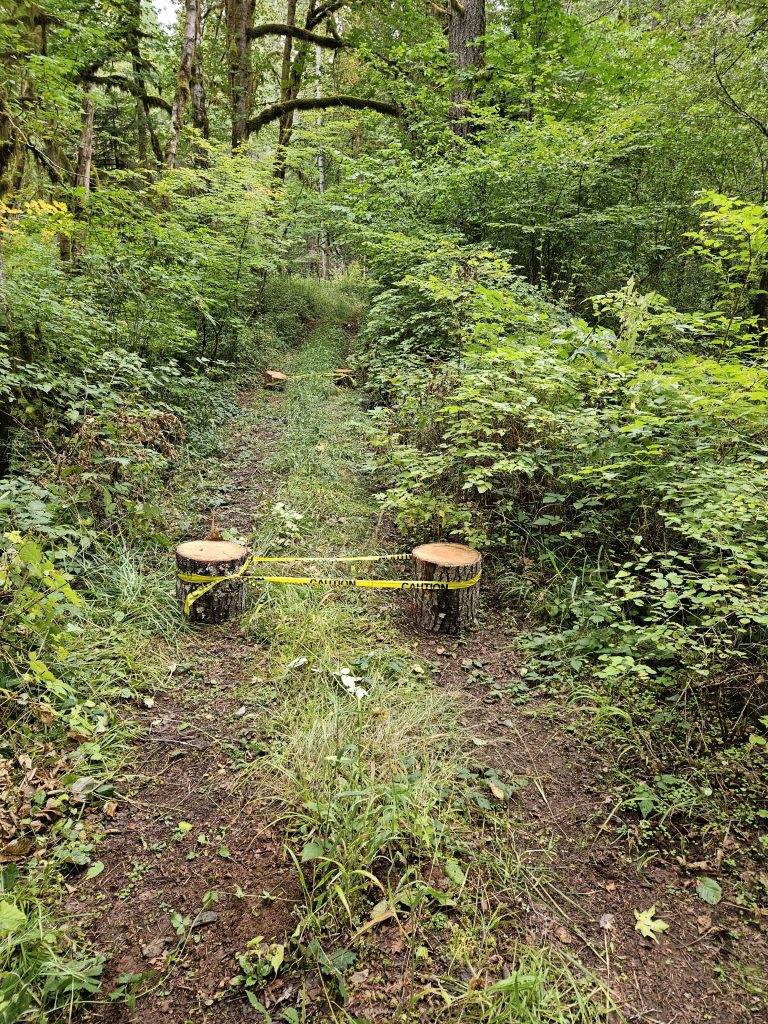
Remember the hole I fell into? No longer safe for vehicle traffic, this temporary roadblock should cause Ranger riders to turn around.
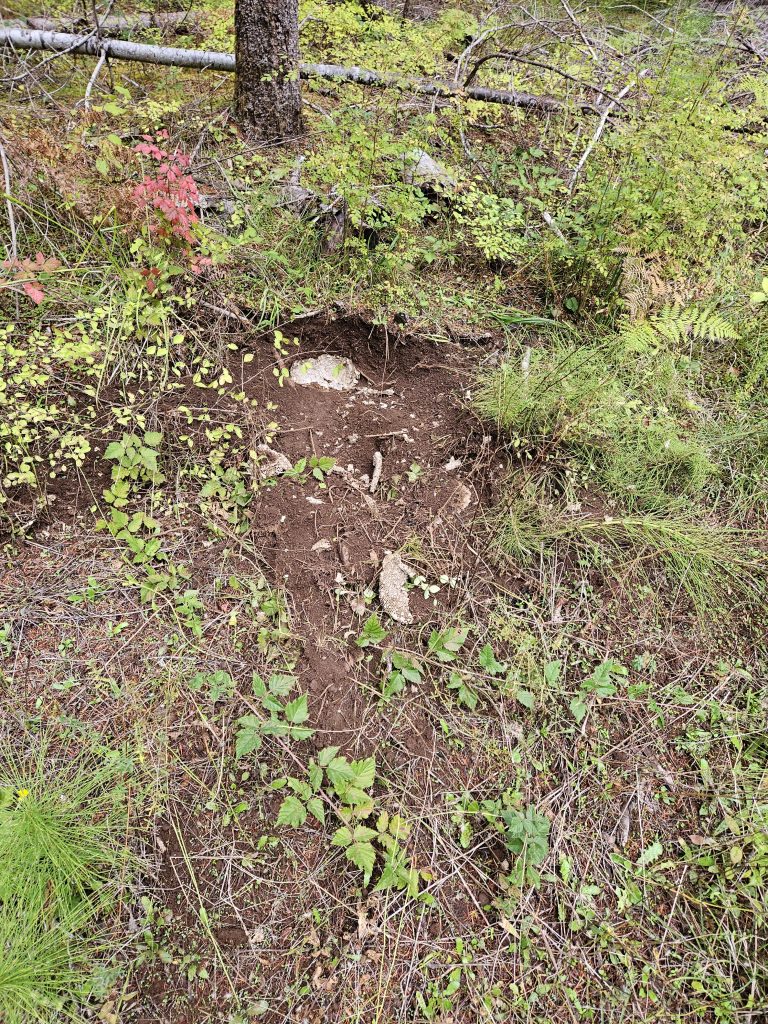
Remains of a large underground yellow jacket nest. Skunk or racoon work. Bill got stung on the ear by one of the disgruntled yellow jackets.
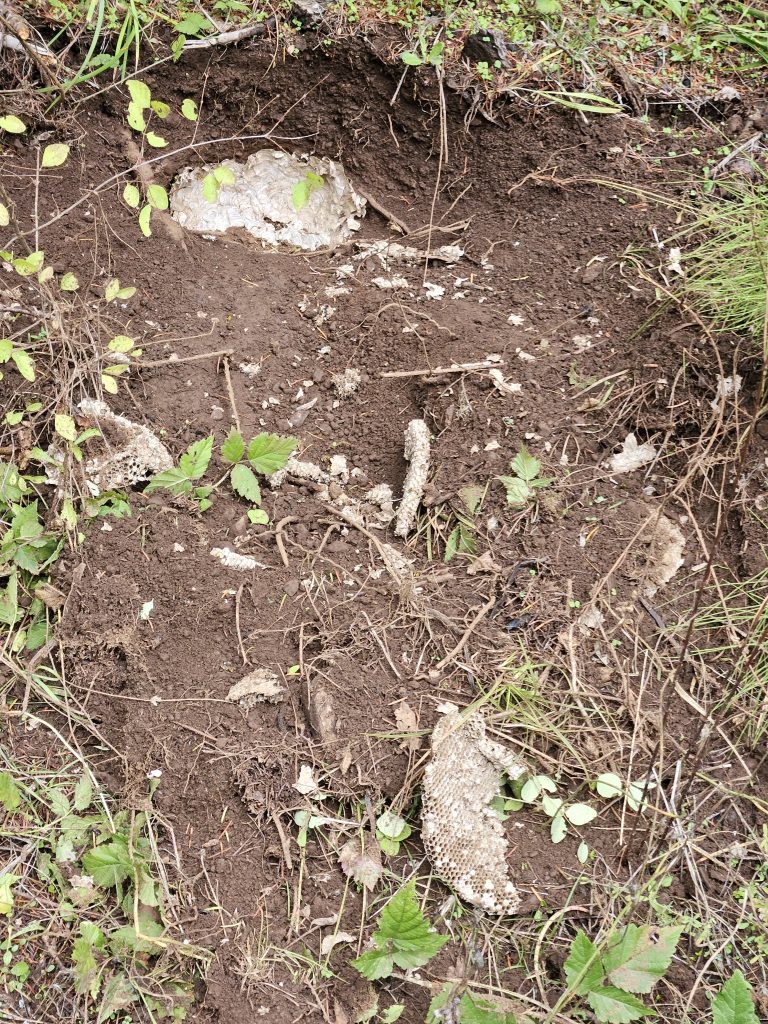
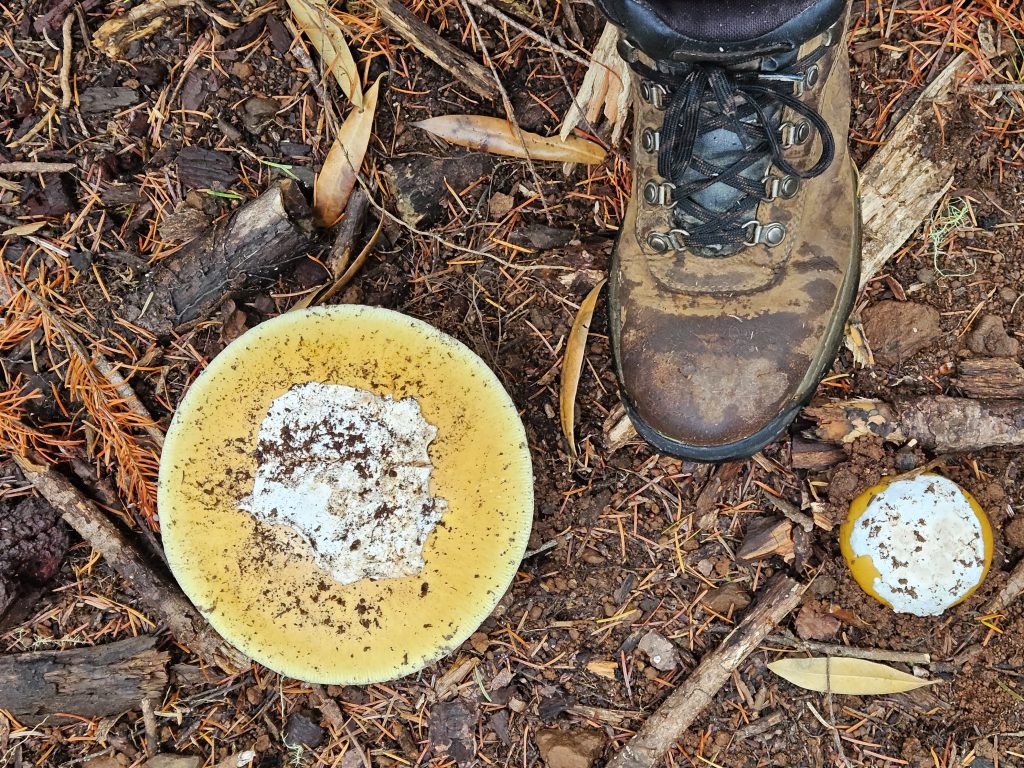
Large mushroom found in the middle of the new forest road that bypasses the hole I fell into. I couldn’t figure out what kind. (Added comment: with the help of a fellow Benton Small Woodlands Association member (Dave H.) it has been identified as an Amanita calyptroderma.
Amanita calyptroderma
From Wikipedia, the free encyclopedia
| Amanita calyptroderma | |
|---|---|
| Scientific classification | |
| Domain: | Eukaryota |
| Kingdom: | Fungi |
| Division: | Basidiomycota |
| Class: | Agaricomycetes |
| Order: | Agaricales |
| Family: | Amanitaceae |
| Genus: | Amanita |
| Species: | A. calyptroderma |
| Binomial name | |
| Amanita calyptroderma G.F. Atk. & V.G. Ballen 1909 | |
| Synonyms | |
| Amanita calyptrata Amanita lanei | |
| Amanita calyptrodermaMycological characteristics | |
|---|---|
| Gills on hymenium | |
| Cap is flat or convex | |
| Hymenium is free | |
| Stipe has a ring and volva | |
| Spore print is white | |
| Ecology is mycorrhizal | |
| Edibility is not recommended | |
Amanita calyptroderma also known as coccora, coccoli or the Pacific amanita,[1] is a white-spored mushroom that fruits naturally in the coastal forests of the western United States during the fall and winter and spring.
Description[edit]
This mushroom’s cap is about 10–25 cm in diameter, usually orange-brown in color (but sometimes white),[2] and partially covered by a thick white patch of universal veil. It has white, close gills.[3] Its cream-colored stalk is about 10–20 cm in length and 2–4 cm in width,[2] adorned with a partial veil. It has a partially hollow stem (filled with a stringy white pith), and a large, sacklike volva at the base of the stalk.[2]
The spores of this species, which are white,[2] do not change color when placed in a solution of Melzer’s reagent, and thus are termed inamyloid.[3] This characteristic in combination with the skirt-like annulus and absence of a bulb at the base of the stalk place this mushroom in the section Caesareae.
Distribution and habitat[edit]
This mushroom occurs in conifer forests,[3] forming mycorrhizae with madrone (Arbutus menziesii) in the southern part of its range (Central California northwards to Washington). However, in the northern part of its range (Washington to southern Canada), its preferred host is Douglas fir (Pseudotsuga menziesii).

Edibility[edit]
Experienced mushroom hunters regard this mushroom as a good edible species,[4] but caution must be exercised when collecting A. calyptroderma for the table, since it can be confused with other species in the genus Amanita.[2] This genus contains some of the deadliest mushrooms in the world, most notably A. phalloides and A. ocreata.
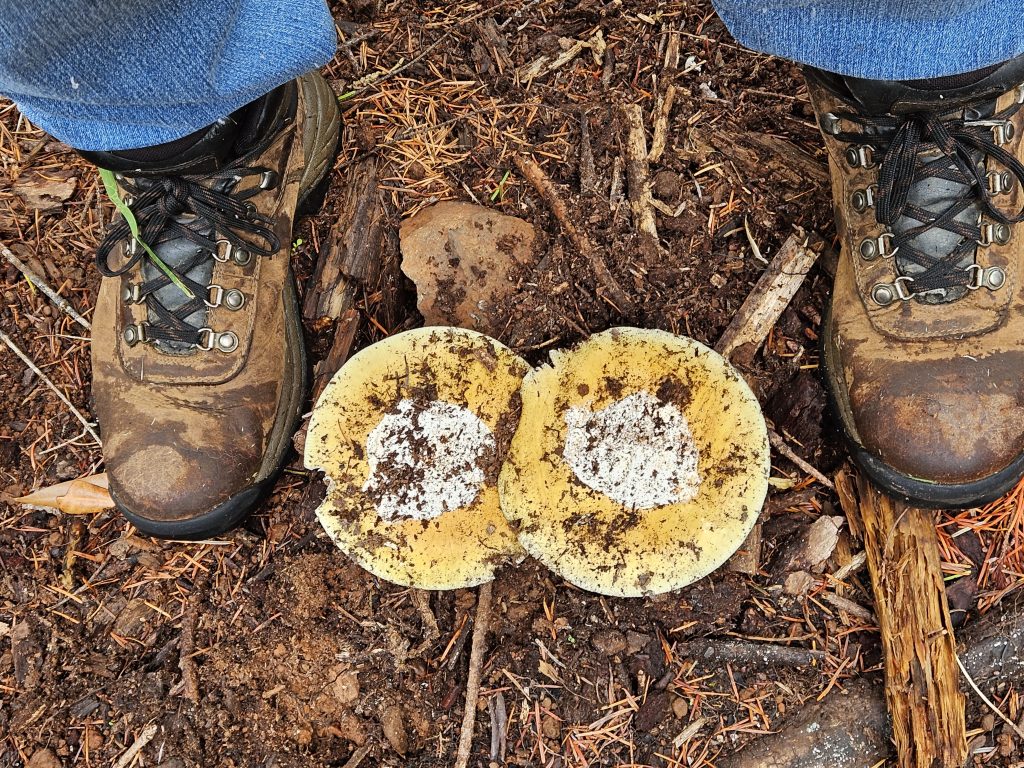
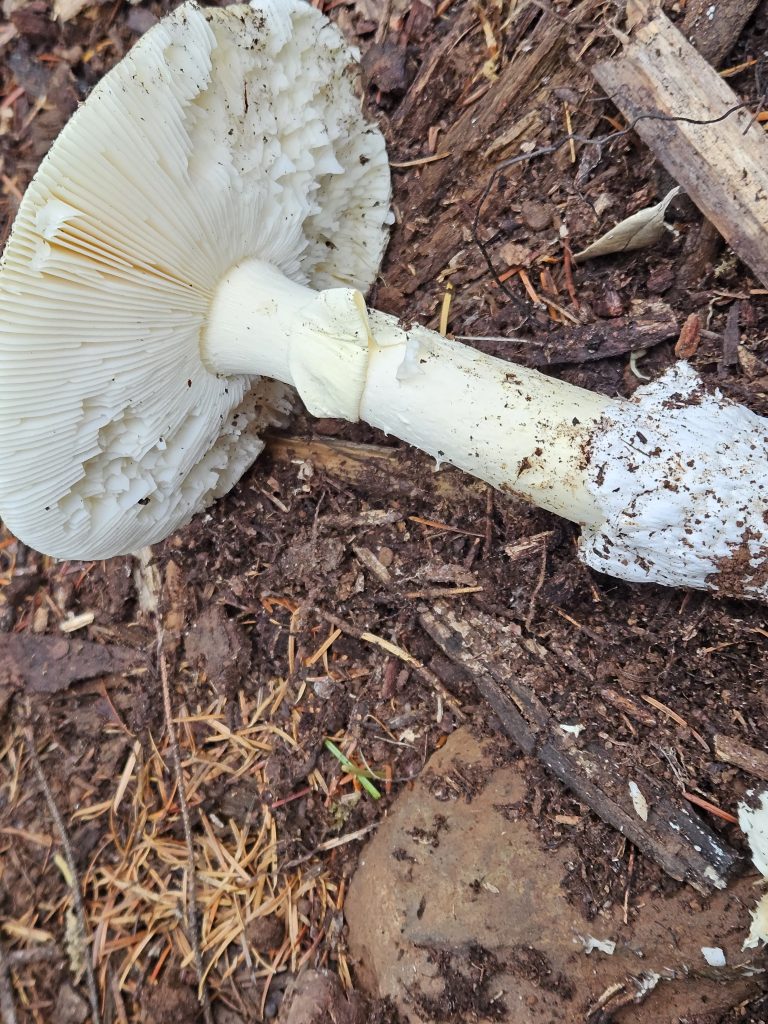
![]()
